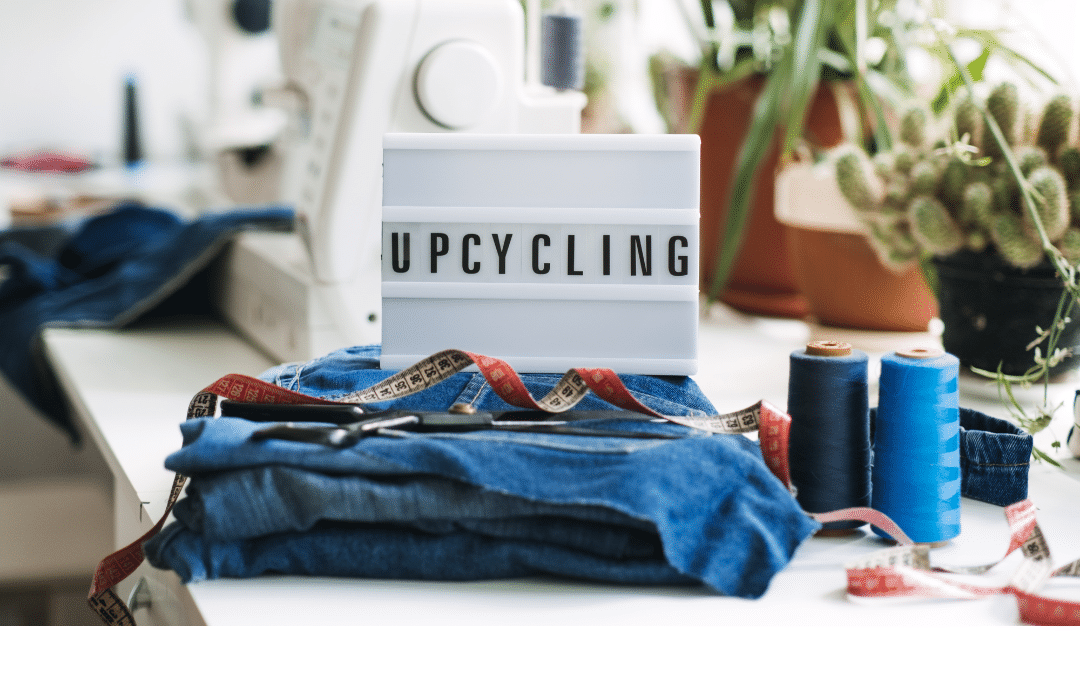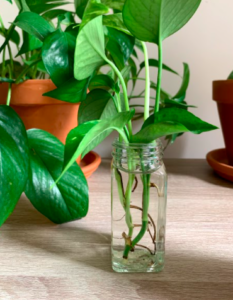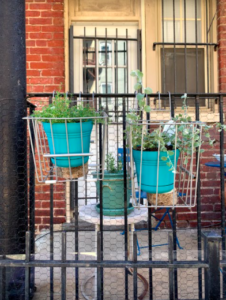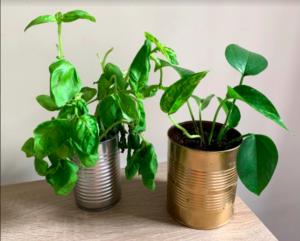We all know about recycling, but what about upcycling? Recycling can be an effective way to reduce waste, but the final recycled product is often of lower quality than the original material.
Upcycling is the act of creating something of value out of something that would have otherwise been thrown out (1). Help the planet and your wallet with this easy introduction to upcycling!
The goal of upcycling is to inch us closer to a circular economy, which aims to take us from a “take, make, waste” model of consumption to one that reduces the amount of resources used through recycling and reusing materials in different ways (2). We can make use of what we already have access to instead of depleting resources to create new products and materials.
Closing the Loop
The simple fact is that many of us consume far too much. According to the EPA, the average American will produce about 5 pounds of trash each day (3). They estimate that around 1.5 pounds of this is recycled. This means on average each individual is responsible for sending over 1,200 pounds of waste to landfills each year. Then there are the resources that go into the items we consume and how they’re extracted, but that’s a whole other story (4).
An individual may not be able to upcycle their way to achieving a circular economy, but individual choices can add up to make an impact. We can begin to use less water, energy, and raw materials by being more mindful of the resources we consume and discard. Some may choose to see this as a practice of harm reduction and non-excess, two key aspects of yoga ethics.
Reduce, Reuse, Upcycle
When you purchase fewer materials, you save money! Recently, my roommate and I talked about planting herbs or veggies outside. We don’t have much space, so we figured hanging pots were our best option. Instead of buying planters, my roommate found old tennis ball baskets in the alley behind our apartment and fashioned them to hold the pots. We ended up saving money while reclaiming metal from ending up in a landfill. Plus we ended up with a very cool and rustic look. Total win! 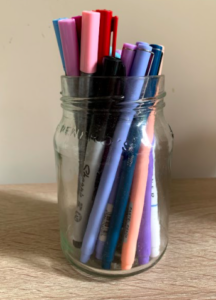
With a little creativity, you can find whatever you might need in or around your own home. Another option is perusing the nearby sidewalks, alleys, or a local Buy Nothing Facebook group (5). During non-quarantine times, you could find something secondhand at a flea market or thrift store. Upcycling can be as simple as cleaning and repurposing glass jars from pasta sauce, salsa, nut butters, etc. I often choose which of these items to buy based on the utility of the jar! Use emptied jars for airtight food storage, organizing pens, or holding flowers. Empty spice jars store anything from q-tips to bobby-pins. You can even use them to propagate your houseplants! Since reclaimed glass often isn’t recycled, this is one of the easiest ways to reduce waste (6).
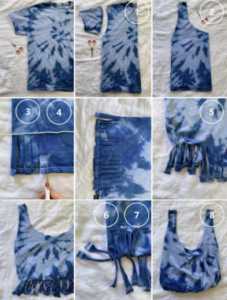 Upcycled No-Sew T-Shirt Bag
Upcycled No-Sew T-Shirt Bag
Both the rise of fast fashion and the abundance of textile waste present opportunities for upcycling (7). Instead of tossing old T-shirts, convert them to zero-waste grocery bags or kitchen rags. A quick internet search will yield tons of other options for old clothes. There are even ways to customize and update tried-and-true wardrobe favorites to a new, current style. If you are willing to get crafty and creative, the options are endless!
For an easy introduction to upcycling, try transforming an old T-shirt into a chic new tote to use for groceries or your next flea market trip! Follow along with the instructions and photo. All you need is an old t-shirt and some scissors!
Instructions:
- Cut the sleeves off your shirt, cutting along the inside of the seam.
- Cut out a deep U-shape from the neck to create the handles.
- Turn the shirt inside out, making sure the bottom is even and smooth.
- Begin cutting strips about 3-4” in length, cutting to the same line.
- Tie the strips together to create the bottom of the bag.
- You’ll see little gaps between each knot. To close those gaps, tie each top strip to the bottom of the adjacent strip, making tight knots.
- Tie a double knot at the ends to reinforce the corners.
- Turn your bag inside out and you have your tote!
Go Get Creative!
Upcycling can be so simple. Just come up with a plan of action, gather all the tools and materials you’ll use, and get started! There are many interesting materials out there waiting to be given a new life. With infinite ideas for upcycling online, the possibilities are endless. The basic goal of upcycling is to reduce waste and conserve resources. So next time you go to throw something away, try pausing to see if you can reinvent or reuse the item before it goes to waste. It’s all about being creative. Once you start practicing, you’ll start seeing new uses for things everywhere you look!
Sources:
- What is Upcycling?, https://upcycledworld.com/what-is-upcycling/
- Closing the Loop: How a Circular Economy Helps Us #BeatPollution, https://www.unenvironment.org/news-and-stories/story/closing-loop-how-circular-economy-helps-us-beatpollution
- National Overview: Facts and Figures on Materials, Wastes and Recycling, https://www.epa.gov/facts-and-figures-about-materials-waste-and-recycling/national-overview-facts-and-figures-materials
- Resource Extraction Responsible for Half the World’s Carbon Emissions, https://www.theguardian.com/environment/2019/mar/12/resource-extraction-carbon-emissions-biodiversity-loss
- Buy Nothing, https://buynothingproject.org/about/
- If You’re Not Recycling Glass Are You Really Recycling?, https://www.wastedive.com/news/if-youre-not-recycling-glass-are-you-really-recycling/570500/
- Fast Fashion Speeding Toward Environmental Disaster, Report Warns, https://www.theguardian.com/fashion/2020/apr/07/fast-fashion-speeding-toward-environmental-disaster-report-warns

